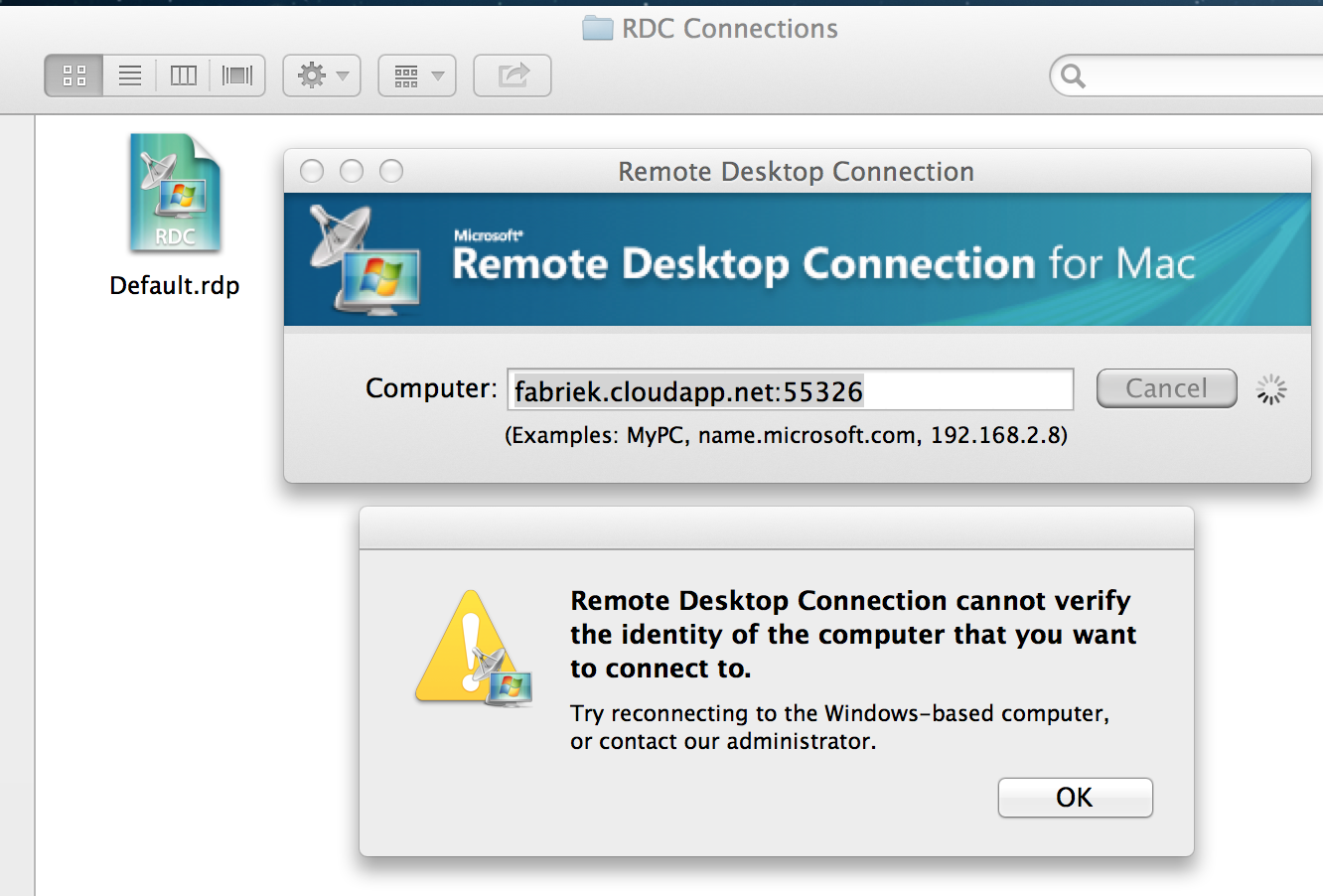

- WINDOWS APPLE REMOTE DESKTOP FOR MAC OS
- WINDOWS APPLE REMOTE DESKTOP MAC OSX
- WINDOWS APPLE REMOTE DESKTOP INSTALL
- WINDOWS APPLE REMOTE DESKTOP FULL
- WINDOWS APPLE REMOTE DESKTOP TRIAL
WINDOWS APPLE REMOTE DESKTOP INSTALL
In one case, on a system that has a M1 chip, we were able to install the iPad / iOS version of the VPN only client, and though not optimal, are able to get a stable, active VPN connection. The VPN only client as well as the ZTNA edition are being pulled down from Fortinet site.
WINDOWS APPLE REMOTE DESKTOP TRIAL
However, if we install the FortiCleint ZTNA client using the same configuration information, the Mac’s in question can connect to VPN with no issue (if you ignore the trial timer). We receive either the “Connection failed to xxx Server” or nothing happens.
WINDOWS APPLE REMOTE DESKTOP FOR MAC OS
In both cases we are unable to successfully connect to the company VPN using any version of the FortiClient-VPN-only client for Mac OS (ranging between 6.0.x -7.) on devices running Monterey. In two cases I have had two different things happen, which is why I mention the OS + M1 vs Intel chip builds.

Some are running on M1 chips and others on 2019 intel chips.

WINDOWS APPLE REMOTE DESKTOP MAC OSX
So, I have been fighting with this exact issue for a client of ours that are strictly running Mac osX ranging from 10.14.x (Mojave) – 12.x (Monterey). When your work is done, Disconnect from FortiClient.
WINDOWS APPLE REMOTE DESKTOP FULL
You should now be connected and signed into your FTNT computer and have full access to your files, applications, and the network. Click Remote Desktop Connectionģ.Enter your FTNT network username in this format: domain\username.Ĥ.At the FTNT computer sign-on prompt, enter your AHS network username and password again. Use the Windows search tool to search for remote desktop. Remote Desktop Connection is provided as part of the Windows. Note: The target FTNT computer must be powered on and no other user can be logged on.įortiClient must be active and connected. *Note that this screen displays the assigned IP address from the SSL VPN located inside FTNT.Īfter you have successfully connected FortiClient, it can be used with the Remote Desktop Connection (RDP) tool to remotely access an FTNT computer from your personal computer. The window will minimize to the task bar. A connection to the AHS SSL VPN portal will be established. If you have an RSA SecurID hard token (fob): Enter your PIN + the 4 digit token (without spaces) that displays on your token.ħ.Click Connect. Do not enter the PIN as part of the FortiClient password. If you have an RSA SecurID soft token: Enter the 8-digit token that displays on your device (mobile phone). The Connection Name and Username should be automatically populated. Username: Enter your FTNT network user name (optional) On the New VPN Connection screen, enter the following information:Ĭonnection Name: Enter a name, such as FTNT VPN.Select the Acknowledge checkbox and then click I accept.Make sure the remote computer is available and the firewall is not blocking screen sharing.'.īoth computers have Norton 360 installed but disabling firewall protection on both does not change anything. However, trying to connect I get the error ' Connection failed to "" Unable to communicate with “”. I entered the Mac-mini's IP address to the ARD app as it was shown in its preferences as I was granting access to I have enabled remote access in the preferences on my Mac-mini and installed Apple Remote Desktop (v.3.9.5) on my MacBook. I have FortiClient FortiClientVPN 7.0.2 installed and configured on my MacBook according to the IT department it connects to the university's network as the log reports indicate. I want to connect from home (MacBook Air) to work (Mac-mini) both with macOS Monterey (v.12). Since macOS-based computers are very rare our IT department does not provide any help for the system. If you see the New Workspace Available alert, click Download now to load all available workspaces.My university utilizes FortiClientVPN to enable connection to the university's network to work remotely. The Microsoft Remote Desktop app will load workspaces available to you and notify you if there are new ones.Wait for the connection to be made, then at Notification Center, select Allow Notifications (this is recommended).Authenticate with Two-Step Login if requested. In the Pick an account window, click the account for your Cornell NetID email address If you do not see your NetID address, click Use another account and type your Cornell email address Continue to sign in using your Cornell NetID email address and password, then click Sign in.In the Add Workspace window, type into the first field, then click Add.Click the Workspaces tab at the top of the app window.Open the Microsoft Remote Desktop client app.You can also launch Microsoft Remote Desktop from the Go menu and clicking Applications, then Microsoft Remote Desktop. After the app installed, use Finder to launch Microsoft Remote Desktop.


 0 kommentar(er)
0 kommentar(er)
